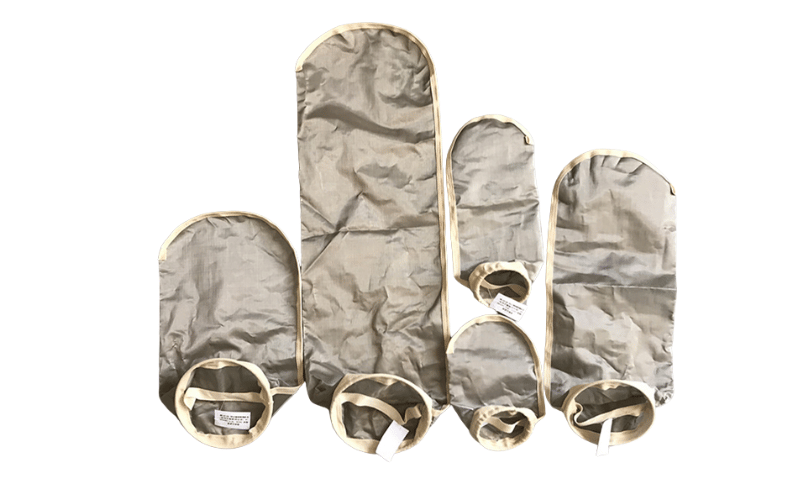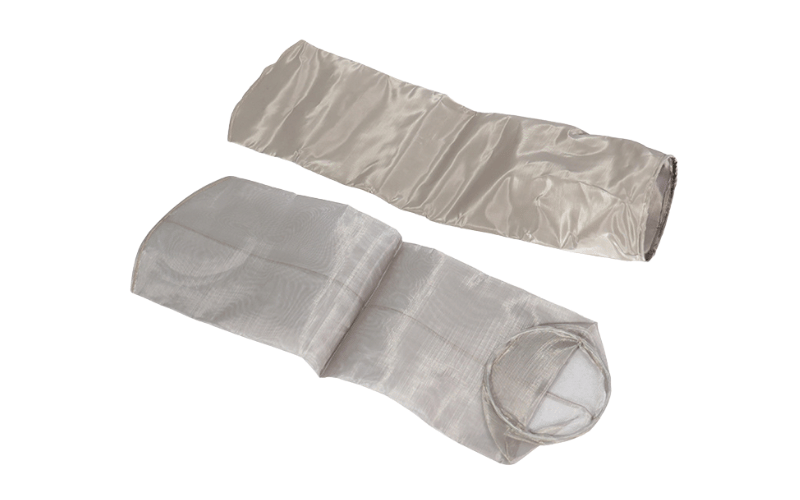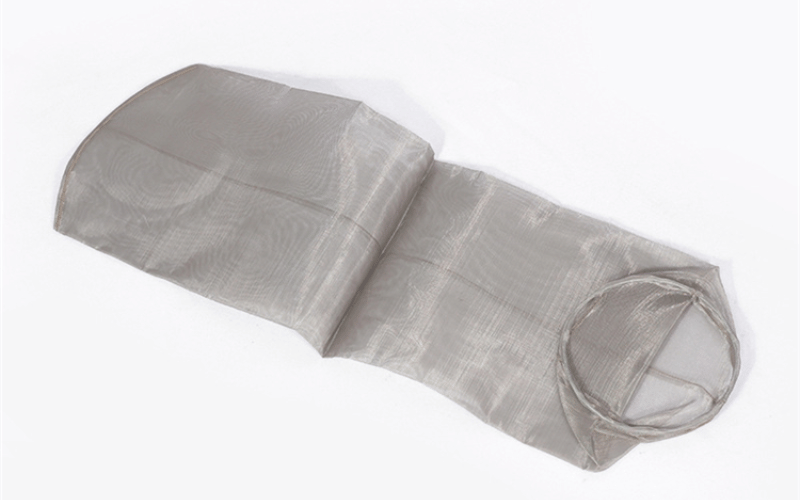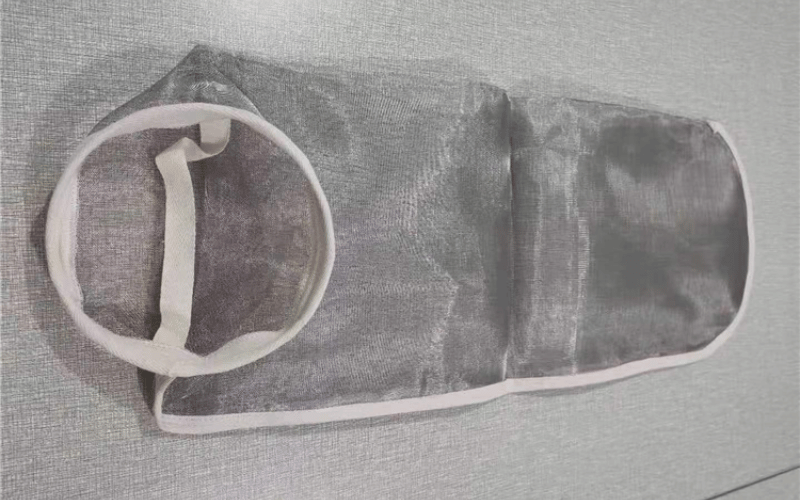Stainless Steel Filter Bag
Home » Liquid Filter Bag » Stainless Steel Filter Bag
Efficient Filtration | Long Service Life | Customizable Options
The Stainless Steel Filter Bag is made of high-quality stainless steel material, featuring excellent corrosion resistance and the capability to withstand harsh environments for extended periods. The stainless steel mesh filter bag maintains stable performance at high temperatures, resisting deformation or damage. The stainless steel material is non-toxic and harmless, preventing secondary contamination of the filtered material and meeting environmental protection requirements.
Product Features
- High-temperature resistance, excellent performance, resistant to deformation or damage
- Excellent corrosion resistance, suitable for various harsh environments
- Diverse filter bag specifications available, including sizes 1, 2, 3, and 4
- Fine mesh openings effectively filter out small impurities, enhancing filtration efficiency
- Easy to clean and maintain, resistant to blockage, and requires minimal upkeep
Technical Specifications
| Bag 1 | Bag 2 | Bag 3 | Bag 4 | ||||
|---|---|---|---|---|---|---|---|
| Filter area (m²) | 0.25m² | 0.5m² | 0.09m² | 0.16m² | |||
| Nominal diameter (mm) | 180 | 180 | 108 | 108 | |||
| Length (mm) | 440 | 810 | 230 | 380 | |||
| Maximum operating temperature (°C) | <150℃ | ||||||
| Suitable medium | Strong alkalis, strong alkalis, aromatic compounds, oils and fats, organic solvents, water microorganisms, etc. | ||||||
Selection Table
| step1 | step2 | step3 | step4 | step5 |
|---|---|---|---|---|
| Product Brand | Product Type | Filter Precision | Filter Bag Size | Ring Type |
| top-filterbag | MD | AC | SIZE | H |
| Top FILTER | Stainless steel mesh filter bag | 0.5 micrometer 1 micrometer 5 micrometers … 10 micrometers 25 micrometers 50 micrometers … | Bag 1: Φ180 x 440 Bag 2: Φ180 x 810 Bag 3: Φ108 x 230 Bag 4: Φ108 x 380 | R-stainless steel ring |
Application Industries
- New Energy, Semiconductors
- Petroleum, Petrochemicals
- Food, Beverages, Pharmaceuticals
- Coatings
- Mining
- Industrial Water Treatment
- Pulp and Paper
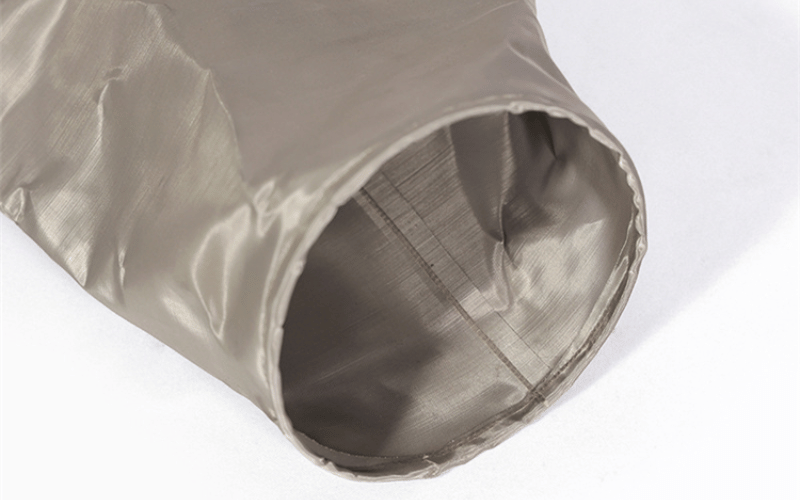
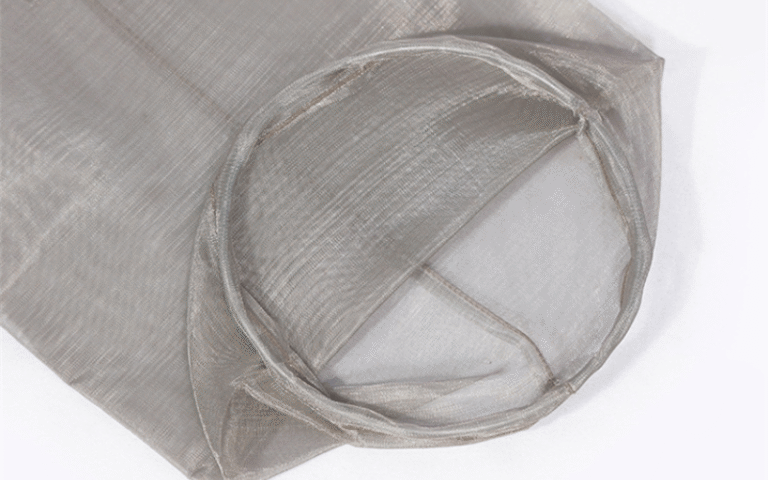
Benefits of Stainless Steel
- Corrosion Resistance: Stainless steel’s natural resistance to rust and oxidation ensures our filter bags maintain structural integrity in challenging environments, such as exposure to chemicals, moisture, or saltwater.
- Durability: The high mechanical strength of stainless steel allows our filter bags to perform under high pressure and abrasive conditions without deformation.
- Temperature Tolerance: Unlike other materials, stainless steel withstands extreme heat and cold, making it ideal for industries that demand thermal stability.
- Long Lifespan: Our filter bags can be reused repeatedly with proper maintenance, providing significant cost savings compared to disposable alternatives.
- Eco-Friendly Attributes: The reusability of stainless steel reduces the environmental impact by minimizing waste, aligning with sustainable industrial practices.
How to Select the Right Stainless Steel Filter Bag?
Choosing the right stainless steel filter bag is crucial for achieving optimal performance in industrial filtration processes. We recognize that every application is unique, so our stainless steel filter bags are designed to meet a wide range of filtration needs. To help you make an informed decision, we’ve outlined essential considerations and guidance below.
Key Specifications to Consider
When selecting a stainless steel filter bag, it is vital to evaluate the specifications that align with your application. Key factors include:
Material Quality: Our filter bags are constructed from high-grade stainless steel, engineered to provide durability and resistance to corrosion in even the most demanding environments. Ensuring material compatibility with the fluid or gas being filtered is essential to prevent unnecessary wear or chemical reactions.
Bag Dimensions: Proper sizing is critical to achieving a secure and leak-free fit within your filtration system. We offer a variety of sizes to accommodate diverse system requirements.
Operating Temperature and Pressure Tolerance: Stainless steel is favored for its ability to withstand high temperatures and pressure. Take note of the operating conditions in your filtration process to select a bag that matches these demands.
By aligning these specifications with the operational conditions of your filtration system, you minimize the risk of inefficiencies and equipment failure.
Flow Rate and Its Impact on Filtration
Understanding the flow rate is pivotal when selecting a stainless steel filter bag. The flow rate refers to the volume of fluid or gas passing through the filter within a specific timeframe.
Why Flow Rate Matters: A flow rate that is too high can overwhelm the filter, reducing filtration efficiency and potentially leading to clogging. On the other hand, a flow rate that is too slow may hinder productivity.
System Compatibility: Ensure the selected filter bag can handle the system’s flow rate without compromising filtration quality. Our filter bags are designed with precision to manage a wide range of flow rates while maintaining performance consistency.
We recommend assessing your system’s flow requirements and consulting our experts if you need assistance in identifying the ideal filter bag for your process.
How to Determine the Right Micron Rating?
The micron rating of a filter bag defines the size of particles it will capture during filtration. Selecting the correct micron rating is vital for achieving the desired filtration efficiency.
Application-Specific Needs: Identify the size of the contaminants you wish to trap. For example, processes requiring ultra-fine filtration will need a lower micron rating, while applications dealing with larger particles can use a higher micron rating.
Balancing Efficiency and Flow: Bear in mind that finer micron ratings may reduce the flow rate slightly due to higher filtration precision. Our stainless steel filter bags strike a balance between filtration efficiency and optimal flow capabilities, providing consistent results.
Versatility in Options: We offer a range of micron ratings to cater to diverse industrial requirements. Whether you require coarse filtration or ultra-fine particle capture, our products are specifically designed to meet your needs.
If you’re uncertain about the appropriate micron rating, our team is available to guide you through the selection process, ensuring compatibility with your application.
Support for Your Filtration Needs
At every stage of your purchase, we are here to provide expert advice and solutions tailored to your requirements. Whether you need help determining specifications, understanding system compatibility, or troubleshooting after installation, our team of professionals is just a call away.
Selecting the right stainless steel filter bag doesn’t have to be a complex process. With our premium products and knowledgeable support, we’re confident we can help you achieve peak filtration performance for your industrial applications. Reach out to us today to discuss your operational needs in detail!
Maintenance of Stainless Steel Filter Bags
Ensuring the longevity and performance of stainless steel filter bags requires proper maintenance practices. At our company, we understand the importance of reliable filtration systems, and we are here to guide you through best practices for maintaining your filter bags. Regular care not only extends their lifespan but also enhances the efficiency of your filtration processes.
How to Clean and Maintain Your Filter Bag?
Cleaning and maintaining your stainless steel filter bag is vital to preserving its functionality and preventing operational downtime. Follow these detailed steps for effective maintenance:
Inspection Before Cleaning
Begin by removing the filter bag from the housing and inspecting it for visible debris or damage. Ensure the cleaning process will not exacerbate any wear or tear.Choose the Right Cleaning Method
- Manual Cleaning: Gently rinse the filter with clean water to remove surface particles. For stubborn residues, use a soft brush and a neutral cleaning solution suitable for stainless steel. Avoid abrasive chemicals that may damage the material.
- Ultrasonic Cleaning: For thorough cleaning, ultrasonic systems can dislodge contaminants trapped in finer pores without compromising the bag’s structure.
Allow Proper Drying
After cleaning, air-dry the filter bag completely in a clean environment. Ensure no moisture remains before reinserting it into the system to prevent microbial growth.Reinsertion and Testing
Once cleaned and dried, carefully replace the filter bag, ensuring it is seated properly in the housing. Perform a system test to confirm optimal functionality.
Routine maintenance performed on a biweekly or monthly basis (depending on application volume and type) can significantly improve operational efficiency.
When to Replace the Filter Bag
Despite proper maintenance, stainless steel filter bags have a limited operational lifespan. Recognizing when to replace the bag ensures uninterrupted filtration performance. Consider the following replacement guidelines:
Manufacturer’s Lifespan Recommendations
Our filter bags are designed to meet specific industrial challenges. Adhering to our recommended lifespan ensures maximum efficiency and reliability.Sudden Pressure Drops
A noticeable drop in system pressure could indicate the bag has reached its maximum capacity or sustained irreversible damage.Consistent Process Contamination
If your system is repeatedly unable to meet filtration standards despite regular cleaning, the filter bag may have degraded and should be replaced.
Signs of Wear and Tear in Filter Bags
Understanding the signs of wear and tear helps you proactively address issues before they escalate. Below are the key indicators to monitor:
Material Deformation
Look for any bending, folding, or distortion of the stainless steel mesh. Structural changes can signal reduced filtration efficiency.Corrosion
Although stainless steel is highly resistant to corrosion under normal conditions, exposure to extreme environments or improper cleaning agents may cause pitting or rust. Immediate action should be taken if corrosion is detected.Tears and Damage in the Mesh
Even microscopic damage to the mesh can compromise the filter’s performance. Use a magnifying lens during inspections to detect such issues.Residue Accumulation
Persistent buildup of residue, even after cleaning, may indicate that the filter bag is no longer capable of maintaining its original filtration capacity.
Proper maintenance and timely replacement are essential for maintaining the operational efficiency of your stainless steel filter bags. Should you require further assistance with maintenance procedures or selecting replacement parts, our dedicated technical support team is here to help. Contact us today for expert guidance tailored to your specific filtration needs.
FAQs About Stainless Steel Filter Bags
Q: What are the benefits of using a stainless steel filter bag in industrial filtration applications?
A: Stainless steel filter bags, particularly those made of 304 stainless steel, provide a durable and cost-effective solution for bag filtration. They are resistant to corrosion and can handle a wide range of fluid viscosities, making them ideal for various industrial processes.
Q: How does the bag housing affect the filtration process?
A: The bag housing is crucial in any filtration system as it holds the filter bag securely and ensures a proper seal to prevent fluid bypass. A well-designed bag housing enhances filtration efficiency and minimizes maintenance downtime.
Q: What is the significance of the weld finish on stainless steel filter bags?
A: The weld finish on stainless steel filter bags is essential for ensuring a strong and reliable seal. A high-quality weld reduces the risk of leaks and enhances the overall durability of the bag, making it suitable for high-demand industrial applications.
Q: What is the typical flow rate in gallons per minute (gpm) for a stainless steel filter bag?
A: The flow rate in gpm for a stainless steel filter bag can vary based on the design and size of the bag, as well as the viscosity of the fluid being filtered. Typically, a well-designed bag filtration system can handle flow rates ranging from 10 gpm to over 100 gpm.
Q: What types of materials are commonly used to manufacture stainless steel filter bags?
A: Stainless steel filter bags are commonly made from 304 and 316L stainless steel due to their excellent corrosion resistance and strength. Depending on the application, carbon steel may also be used, though it is less common due to its susceptibility to rust and degradation.
Q: How do I maintain my stainless steel filter bag to ensure optimal performance?
A: Regular maintenance includes inspecting the filter bag for any signs of wear or damage, cleaning the bag housing, and ensuring that seals and welds are intact. It is also advisable to replace filter bags according to the manufacturer's recommendations based on the level of usage and contamination.


